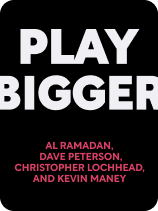

This article is an excerpt from the Shortform book guide to "Play Bigger" by Al Ramadan, Dave Peterson, et al.. Shortform has the world's best summaries and analyses of books you should be reading.
Like this article? Sign up for a free trial here.
How should you promote your company? What are examples of an event marketing strategy?
Marketing events are good ways of introducing your company to the world. The book Play Bigger says that big and small events are opportunities to express your ideas to your target audience.
Check out examples of event marketing strategies to spread your company’s message.
Implement Your Market Design Through a Big Event
When you’ve identified a market and take, reveal them to the world. The best way to do this is through an event marketing strategy we’ll call a Big Event.
A Big Event is an explosive occasion that introduces your company, market, and product to the world, assert the authors. This is the first step toward getting people to embrace your different (not better) approach to solving a problem. Ensure your Big Event is attention-grabbing and makes a mark in the customer’s mind—you must make a big impression to begin getting people to embrace a new market.
You must communicate two main ideas in your Big Event, write the authors: first, that you understand the customer’s problem better than any other company and that you have the solution to that problem. Second, the idea that your business is the market winner—the only viable option in this market. However, as we said earlier, you won’t need to work too hard to convince customers that you’re the market winner because once they realize they have a problem, they’ll yearn for a solution—and you’re the only solution on the market.
A Big Event can be a take-over of an existing event (for instance, your company could set up a booth and offer test runs of your product at a baseball game) or an entirely new event (you might start a “low-tech day,” encouraging people to spend a day without technology by instead using your product).
The entire company will need to rally behind the Big Event and operate in tandem to pull it off. Here are the tasks the authors recommend to make the Big Event a success:
Plan when you’ll hold the Big Event. After agreeing on your take, pick a date three to six months out for the Big Event. Decide whom your Big Event will target: attendees of an existing event, people who work in the business district of your city, companies in a certain industry, and so on. Once you’ve settled on a date, work backward to create a plan of action leading up to the event.
Mobilize your company. Delegate all Big Event planning to your departments, and ensure each employee knows their role in launching the Big Event.
Track your progress. Check if your Big Event plan is either too big or too small for the company to accomplish. Adjust your planning as necessary.
Look out for ill omens. Be wary of internal sabotagers who haven’t bought into the new market and Big Event, products that don’t deliver, and other signs of trouble. Take steps to avoid such obstacles by, for instance, firing naysayers and improving the product.
Make sure the elements of the Big Event are cohesive. Ensure everything about the event—the venue, the bar, the speakers—reflects your new market and company take.
(Shortform note: To complete this step, you might want to enlist the help of an event planner. This is because an event planner can ensure cohesiveness in look and messaging at your event—a step that otherwise might take up time better spent on bigger-picture issues.)
Follow the Big Event With Continued Smaller Events and Campaigns
Once you’ve had your Big Event, follow it up with continued messaging about your market, product, and take in the form of smaller events and campaigns, advise the authors. You thereby fortify and defend your position as the market winner. The authors recommend another three to six events within six months of the last event to firmly establish your new market.
These events and campaigns should contain clever and aggressive messaging that draws attention to your company and continues to show how you’re different from existing competitors and markets, claim the authors. Don’t be polite or hold back when doing this: Be bold and show how you’re new and different. Think and behave like a maverick.
For instance, after your Big Event, you might host a monthly phone-free happy hour and later partner with a researcher to write an article about how harmful technology can be to mental health.

———End of Preview———
Like what you just read? Read the rest of the world's best book summary and analysis of Al Ramadan, Dave Peterson, et al.'s "Play Bigger" at Shortform.
Here's what you'll find in our full Play Bigger summary:
- Why financial success doesn't depend on education or intelligence
- Why the key to financial success lies in understanding human behavior
- How to create a financial strategy you can follow for decades






